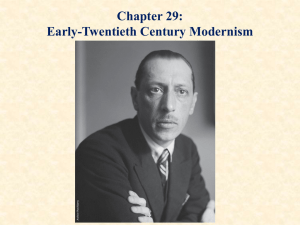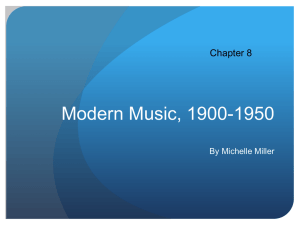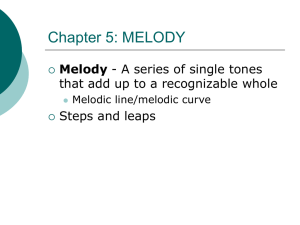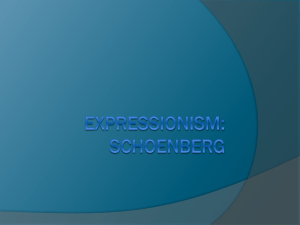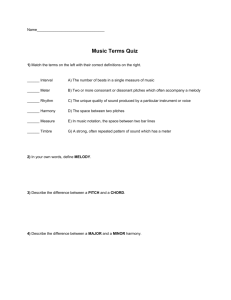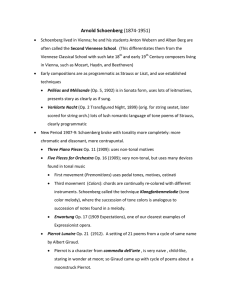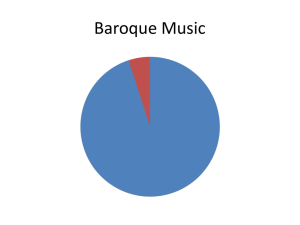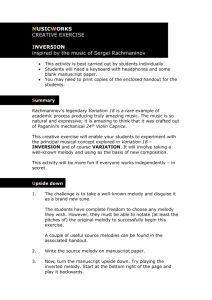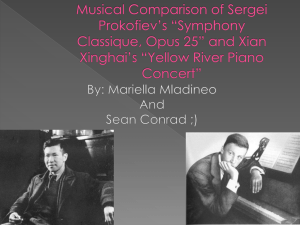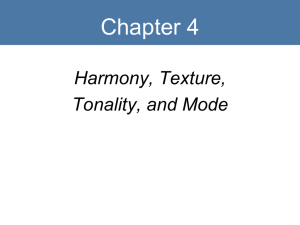Week 14 Lecture Notes
advertisement
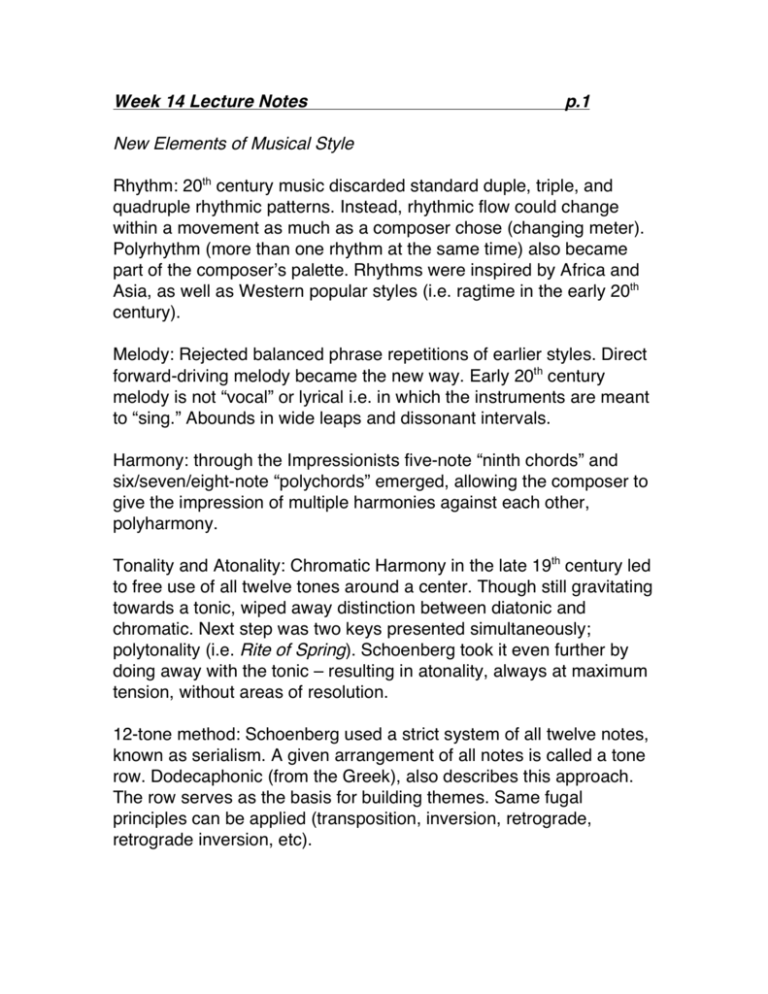
Week 14 Lecture Notes p.1 New Elements of Musical Style Rhythm: 20th century music discarded standard duple, triple, and quadruple rhythmic patterns. Instead, rhythmic flow could change within a movement as much as a composer chose (changing meter). Polyrhythm (more than one rhythm at the same time) also became part of the composer’s palette. Rhythms were inspired by Africa and Asia, as well as Western popular styles (i.e. ragtime in the early 20th century). Melody: Rejected balanced phrase repetitions of earlier styles. Direct forward-driving melody became the new way. Early 20th century melody is not “vocal” or lyrical i.e. in which the instruments are meant to “sing.” Abounds in wide leaps and dissonant intervals. Harmony: through the Impressionists five-note “ninth chords” and six/seven/eight-note “polychords” emerged, allowing the composer to give the impression of multiple harmonies against each other, polyharmony. Tonality and Atonality: Chromatic Harmony in the late 19th century led to free use of all twelve tones around a center. Though still gravitating towards a tonic, wiped away distinction between diatonic and chromatic. Next step was two keys presented simultaneously; polytonality (i.e. Rite of Spring). Schoenberg took it even further by doing away with the tonic – resulting in atonality, always at maximum tension, without areas of resolution. 12-tone method: Schoenberg used a strict system of all twelve notes, known as serialism. A given arrangement of all notes is called a tone row. Dodecaphonic (from the Greek), also describes this approach. The row serves as the basis for building themes. Same fugal principles can be applied (transposition, inversion, retrograde, retrograde inversion, etc). Week 14 Lecture Notes p.2 The Emancipation of Dissonance is the history of a steadily increasing tolerance of listeners over centuries to accept dissonant note combinations. A dissonance can even serve as a final chord/cadence, as long as it is less dissonant than the chord that came before. Orchestration: A leaner sound, smaller orchestral concept than Wagnerian grandeur. Strings lost traditional role as the heart of the orchestra because they were too warm. Attention focused on penetrating winds and percussion including piano as an ensemble instrument. Formalism: Valuing the formal above the expressive, a return to shorter, more succinct classical forms a la Haydn and Mozart, and strove for purity of line and proportion. Arnold Schoenberg (1874-1951) Born in Vienna, mostly self-taught, introduced to Viennese musical society by Zemlinksy, his counterpoint teacher. Became a teacher himself and had devoted students, most famous were Berg and Webern. Called up to active duty in WWI, didn’t compose for eight years, but evolved his “method of composing with twelve tones.” When Hitler came to power in 1933, he emigrated to America. Like many Austrian-Jewish intellectuals he had converted to Lutheranism but when he left Germany he returned to Judaism. Became an American citizen, taught at UCLA and remained in the US until his death. First period: post-Wagnerian Romanticism. Second Period: atonal/Expressionism. Abolished use of tonic. Third Period: Twelve-tone, climax is Variations for Orchestra. Fourth Period: refined twelve-tone, some allusions to tonality. Week 14 Lecture Notes p.3 Pierrot Lunaire Song cycle drew on the Italian commedia del’arte (comedy of the arts), Pierrot is a clown, a model of pantomime for centuries. Text based on Symbolist poet Albert Giraud. The poems’ abrupt change from guilt/depression to atonement/playfulness fired Schoenberg’s imagination. Set the texts for female voice and five instrumentalists. Brought music and spoken word as close together as possible. Sprechstimme (spoken voice) is a vocal melody spoken rather than sung on exact pitches and in rhythm. Klangfarbenmelodie (tone-color melody) is when each note of a melody is played by a different instrument. Each text is a rondeau, a 15th-century verse form in which the opening lines return as a refrain in the middle of the poem and at the end. Pierrot Lunaire no. 18: Use of sprechstimmme against fast, dissonant accompaniment. Complex contrapuntal texture with canonic treatment. Musical and poetical refrain (on “Einen weissen fleck”) Flickering effects created by instrument, playing independently from vocal part.
